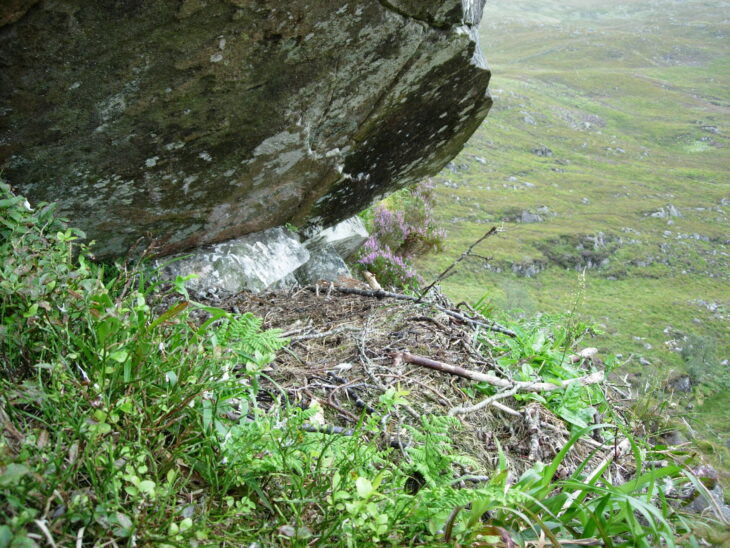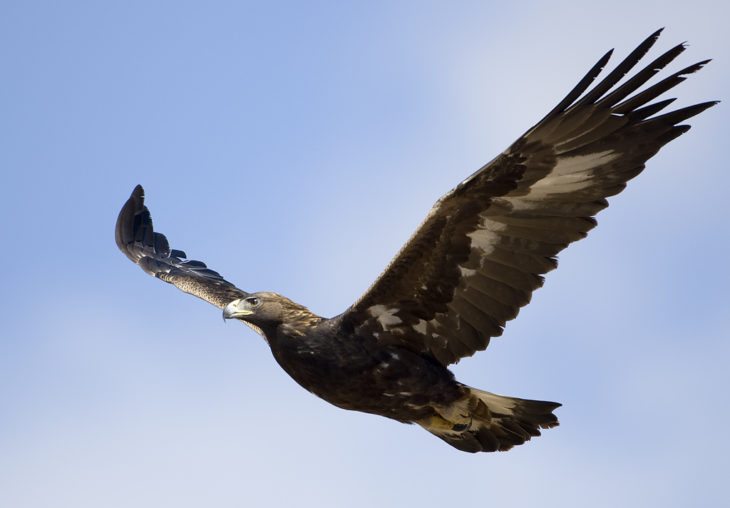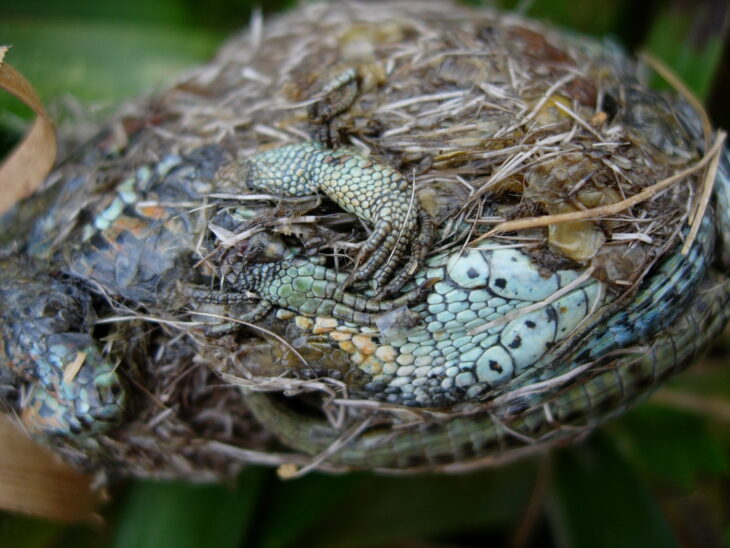Rahoy Hills reserve golden eagles struggle to raise chicks
Our ranger, Steve Hardy shares his experience of monitoring a remote golden eagle’s nest on our Rahoy Hills reserve in Morven where eagles are struggling to successfully raise their young.
Last year, Morven’s eagles, of which there are 8 – 9 pairs, didn’t raise any chicks, and no chicks were raised in the much wider area that includes Ardnurmurchan and Ardgour. The Rahoy Hills reserve pair last fledged a chick in 2018.

Nesting
Watching the golden eagle nest begins in early March, when I establish if the pair are still in residence and look like they are going to make a breeding attempt and on which eyrie (nest), as they have several.
After checking all their known eyries, I had to find their new one! The best way to do this is to watch the birds, and finally, on 13 April I saw a bird fly to a ledge and settle into an incubation position and then a change-over happened where the previous incubating bird flew off the nest. The reserve’s eagles were breeding. I would now check this location weekly.

Hatching
On 9 May I came away feeling confident that the eggs had hatched, as the adult on the nest was not sitting like it would whilst incubating. During my hour watch the parent was twice up and about on the nest, and its head was down in the nest cup frequently. It also appeared to be pulling at out of view food. (Remember I am a long way from the nest cliff, and looking up at it, so can’t see into the nest). I came away feeling sure that their eggs must have hatched.

Frustration eyrie building
I followed a flying adult eagle with my scope on 18 May and shortly picked up the second adult, both circling in front of the cliffs. I watched both birds for the rest of my watch, and not once did they go to this year’s nest. At this stage, an adult, mostly the female, will remain on the nest brooding small chicks, they would not leave them for any length of time until bigger and less prone to chilling. It meant only one thing. The reserve pair had failed to raise a brood this year.
I watched the birds, wheeling around, and flying into several different ledges along the cliffs. They were checking them out for suitability as nest sites. When eagles fail at raising their chicks, they build what are called ‘frustration eyries’, spending the time that they would have spent hunting and protecting their young on the nest, building a new one.
Sometimes both birds landed on the same ledge, where I got good views of the male and female together. He is smaller, and his head is a darker gold, whereas the female’s head is much broader and lighter, almost a blonde gold, which helped me to tell which bird was on the nest during incubation, and she is bigger than the male too. On one ledge, behind two small rowans, the male pulled at twigs and sticks at the base of the rowans and placed them on the ledge. On another ledge, the female pressed her body into the vegetation, she was ‘cupping’, making a nest cup. But they clearly hadn’t chosen a ledge, they were checking several out for suitability. This behaviour and all the time they were away from this year’s nest confirmed beyond any doubt that their nesting attempt had failed, and as hopeful as I had been, I was not surprised. Our eagles are struggling and are in serious trouble.
There are two reasons for this.
Cold wet spring weather
Recent springs have been very cold, wet and windy. A golden eagle nest on the Isle of Mull was blown out of its cliff during one May storm, chick and all! These unseasonal conditions have been disastrous for breeding birds. For eagles, these weather conditions make hunting difficult, threatens vulnerable small chicks to exposure and chilling and reduces the presence of potential prey species on the hill.

Shortage of prey species
Eagles are successfully breeding, laying eggs and hatching chicks. However, the chicks are dying because there isn’t enough prey for the parents to catch to raise them. This is caused by over grazing of the hills by sheep and deer that has reduced the trees, scrubland, heather, grasses and wildflowers that support insects for breeding songbirds and ground nesting birds. They in turn would be the eagle’s food along with voles, geese, deer calves, foxes and lambs.
In 2017, sheep were removed from the reserve and last year from most of the rest of the uplands of Morvern. I’ve seen the vegetation on the hill respond, heather thickening up, flowering plants getting the chance to grow, flower, and go to seed. An upland vegetation survey carried out in 2012 and repeated last year confirms that this is the case and is due to sheep removal and deer reduction. However, for greater biodiversity deer numbers must come down much further.
Biodiversity restoration on a huge scale, globally, is needed to urgently mitigate the impacts of climate change. Achieving this across the Highlands and Islands doesn’t mean an end to farming or stalking, it means working sustainably with the land to bring benefits to both wildlife and people.
I think about ten years from now, and if things stay the way they are, then there won’t be any eagles here in the future.
Find out more about golden eagles here.
Help protect Scotland’s wildlife
Our work to save Scotland’s wildlife is made possible thanks to the generosity of our members and supporters.
Join today from just £3 a month to help protect the species you love.
Preface
Our ranger, Steve Hardy shares his experience of monitoring a remote golden eagle’s nest on our Rahoy Hills reserve in Morven where eagles are struggling to successfully raise their young. …
